The Lives of a Bengal
Lancer
He is the Colonel’s son, a graduate of Sandhurst,
hopelessly green. A poetical transfer from the Blues, very humorous. An unalloyed soldier on the frontier.
Hathaway steals a march on Stevens’ Gunga Din and Huston’s The
Man Who Would Be King in several details.
Andre Sennwald in his New
York Times review speaks of “Kipling’s fatally objectionable
preoccupation with the white man’s burden”.
Peter Ibbetson
“A triumph of surrealist thought”,
Halliwell quotes Breton, likewise Buñuel, “one of the world’s ten
best films”, best of all Variety, “it just isn’t in
the cards”.
Sennwald of the New York Times was highly appreciative,
so was Time Out Film Guide.
It became De Sica’s Miracolo a Milano and
Resnais’ L’Année dernière à Marienbad in the course of
things, even Kurosawa’s Dodesukaden in a way, quite a number of
films, none perhaps quite so precise and vivid in just this way.
The statement of the theme in childhood, its resumption and
resolution in adulthood, where St. Paul has described the various stages,
“a song of the degrees”.
Go
West Young Man
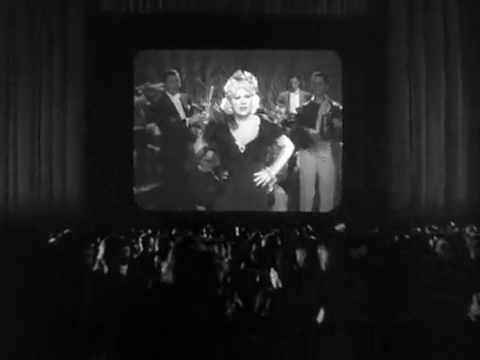
Mavis (rhymes with rara avis strictly
speaking) Arden, star of Purity and the
Maiden, Puzzled Peacocks and her
latest, Drifting Lady, in which she
sings and dances just like Ava Gardner in John
Huston’s The Night of the Iguana,
and furthermore addresses the audience in person on the twin themes of her
producer “A.K. Greenfield, President of Superfine Pictures
Incorporated” and her “little Eye-talian
villa in Hollywood,” she’s really “a veddy
human person like yourselves.”
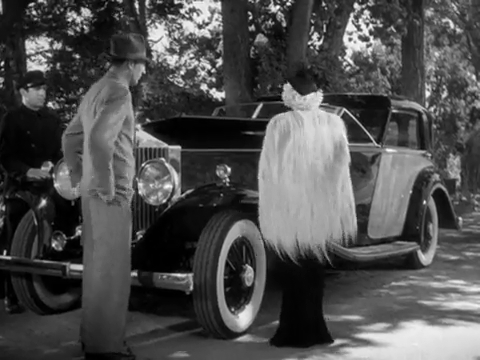
The French maid observes, “you were a beeg
eet tonight, Miss Arden,” vd. Jean-Pierre
Melville in America (L’Ainé des Ferchaux). “Ye-es,” replies the rare bird shifting her finery,
“there was a great crowd out there, full o’ politicians. I felt I was puttin’ a
bill before Congress.”
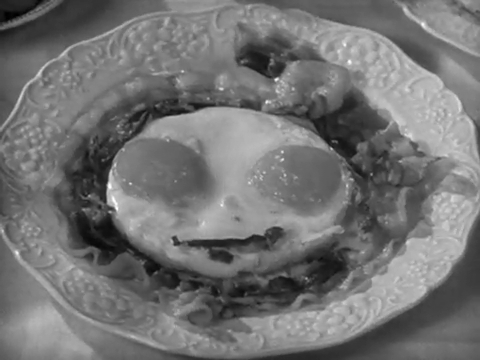
Her press agent, whose job is to protect her purity, wards off a
“ward heeler” and a rustic “Einsteen”,
thus giving you a work on the order of Renoir’s Le Carrosse d’or,
hers breaks down on the road to Harrisburg where Paul Revere no less is called
into play. “You and your evil-minded innurendoes... mm, you
haven’t done anything, my dear,
and nothing’s happened, only
that our—our little interlude—is ended.”
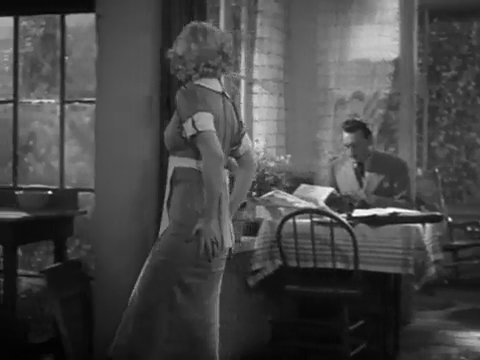
“Our—what?” Screenplay
by the star from Personal Appearance
on Broadway “as presented by Brock Pemberton and Antoinette Perry”,
cinematography Karl Struss (a great one for
moonlight), music Arthur Johnston and lyrics Johnny Burke (“I Was Saying
to the Moon”). For the title, cf. Resnais’ Pas sur la bouche,
and for the rest Fleming’s Bombshell.
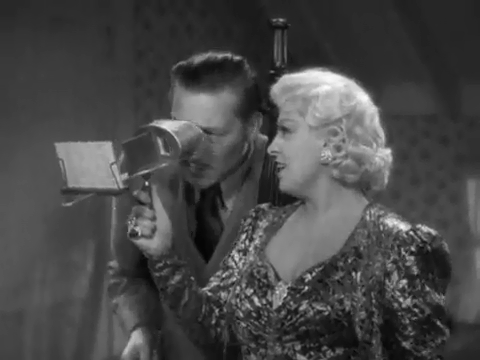
“The movies were never the ideal medium for such bawdy
Broadway clowns as Miss West” (Andrew Sarris, The American Cinema). J.M.T. of the New York Times, “has lost little
in Miss West’s edition.” Variety, “hindered by the
limitations of screen censorship.” Leonard Maltin, “not top-notch... still fun.” Hal
Erickson (All Movie Guide),
“Mae West is moderately amusing”. Halliwell’s Film Guide, “all
rather boring,” citing Graham Greene, “quite incredibly
tedious,” and displaying a grizzled farmer-type in an original advert. “Yup! It’s her all right!”
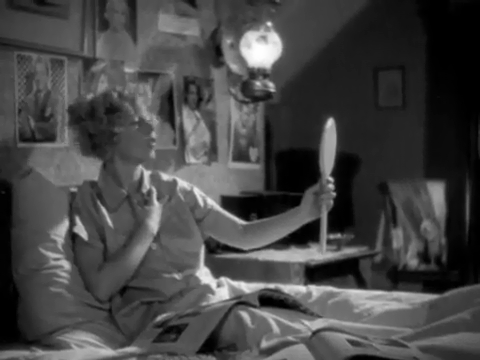
The Real Glory
The Sultan of Mindanao appears with an army of Moros to proclaim
his rulership, he is a certain Alipang.
It’s up to the people, not the U.S. Army, that’s an
order. Four officers and a medical man are left behind to train the Philippine
Constabulary.
A great work of art, closely related to Stevens’ Gunga Din the same year, as Punch and Halliwell noted.
“More action, suspense and melodrama than even a
juramentado could shake his bolo at,” said Frank S. Nugent (New York Times), he could hardly say
less.
“An innocuous melodramatic yarn” (Variety).
“Boy’s own adventure” (Tom Milne, Time Out Film Guide).
Halliwell’s
Film Guide quotes the New Statesman’s
reviewer, “recommended to adolescents of all ages”.
Sundown
The title is a very complicated premise drawn out in many
meanings throughout the film right to the end (a parallel of Wyler’s Mrs. Miniver).
Jesus walked on the water, the Germans travel by land on the
African continent, thanks to the Royal Navy.
A post in Kenya, headquarters is Nairobi. The District
Commissioner, “best we have”, is Canadian.
Hathaway’s film is based on such exploits as
Stevens’ Gunga Din and
King’s Marie Galante, two of
the best films at this time.
Perhaps only a film director could appreciate Hathaway’s
successful and fortunate direction. Certainly the New York Times could not.
Ken Adam proceeds from the Portuguese slave-traders’ cavern
fortress in the early Bond films.
Ten Gentlemen from West
Point
From another point of view, again the departure.
Wing and a Prayer
A sucker punch to the Japs between Pearl Harbor and Midway.
The guy in the other berth, taking losses, preparing the blow.
Hathaway’s technique is the same as in The Dark Corner, perfect for this
requirement, deep-breathed, sharply pointed, ready for
all comers.
The House on 92nd
Street
An authentic case of the FBI against a Nazi spy ring that bribed
congressmen and did a lot of other things, attempted espionage was the big
caper.
Realism is the point of the exercise, locations, extras, so as to set off the astounding finale of
Hitchcockisms.
The tale turns on a Gedächtniskünstler or “memory
artist” in a secret war plant (The 39 Steps), the man who heads
the ring is a woman (Sabotage).
The Dark Corner
One thing understood by Hathaway and Hitchcock is that there is
a dramatic suspense not available to aficionados of genre, the Grecian idea of
a hero not in the know.
This is not a utilitarian idea, Marlowe or Spade plowing through
to a conclusion. The surprise when it comes is on the screen or the stage, not
in the minds of the audience.
The technical story Hathaway presents is of a rich art collector
whose wife is having an affair, he plots a murder. The film is constructed from
a second point of view, that of the patsy for this murder, who has been framed
once before, and by the victim.
Such a work of art as this is meant to take the film noir and make it fully useful in
the artistic sense with no bones about it, therefore Hathaway takes such a
model as The Maltese Falcon or Laura and deliberately makes a film ten
thousand times better, in homage, only to equal it.
Crowther reviewed it gratefully on the same day as
Marshall’s The Blue Dahlia,
criticized Webb for repeating himself, and sounded exactly like Waldo Lydecker.
The Laura motif is
actually another, the Old Master portrait that resembles the girl.
The patsy is a private investigator who stumbles and fumbles his
way to the answer. “Mr. Galt,” says his tormentor, “your
imagination is beginning to bore me.”
13 Rue Madeleine
The incredible velocity of Hathaway’s direction at least
partially stems from an element in his style, he is perfectly willing to dress
a set however large and considerable (or, as in Niagara, to set up a shot on location) that only appears on film
for a few seconds, he even makes this thematic here, a piece of film is shown
to the candidates for military intelligence service to elicit their quick
analysis.
1944, the Second Front. Duclois is building rockets for the Germans in France, he
must be captured alive to reveal their location before D-Day.
One of the candidates is a Nazi spy fed disinformation and sent along on
the mission. He sees through his green American colleagues and kills one, their
training officer parachutes in as a Vichy insurance man, completes the mission
but is left behind, caught and tortured by the spy at Gestapo headquarters in
Le Havre. The address is bombed, obliterated by Allied planes to stop him from
talking.
Critics saw the film go by much too
fast for them, but directors spent decades catching up. Losey in particular
noticed Hathaway’s characteristic pan right from a scenic construction to
another in the shot that completes it, the example here is the office with
plans and maps on the wall behind a desk, from this the camera escorts the
candidate past a large fireplace to the door, out of the frying pan (a shot
emulated in The Go-Between, Ted’s tea things left, the great stove
right).
Another example is a Renoir view
through an open farmhouse doorway onto the countryside (La Grande illusion),
the camera pans right to show the ruined walls of this “safe house”
and finally the communicator tapping out a vital message in a corner.
Kiss of Death
Crime kills the criminal, robs him of life and goods and all.
“Damon Magoffin” is the name on the obituary page in the Sing Sing
library.
Academy ratio is a thing understood by Hathaway as well as Ozu.
The thing is perfect in its disposition of all the elements of the frame
throughout the picture. Right, left, up, down, foreground, background,
everything figures into a complete language of film.
This is what Joseph Losey strained to achieve in The
Go-Between.
Call Northside 777
The two major analyses are Hitchcock’s The Wrong Man
and Antonioni’s Blowup.
Critics were perplexed. Bosley Crowther of the New York Times
wrote, “as much of an insult to the intelligence of a reporter as it is
to the virtue of the state,” Variety to the same effect. For Geoff Andrew in Time Out Film Guide, “an
absorbingly intelligent thriller.”
The Black Rose
This picaresque epic is equally marvelous in itself and as the
forerunner, eventually, of Nevada Smith.
You’re in the
Navy Now
“In the early years of World War II...” trained men
are at a premium, the metaphor is a high-speed steam turbine using
“triple-distilled” seawater it converts on its own, an experimental
proposition in a subchaser at Norfolk with a ship’s company of one
embarrassed boatswain, the rest inductees and ninety-day wonders including the
captain.
The climax coincides with the Battle of Midway and gives a
convincing picture of a peacetime Navy hurled very heroically into
circumstances that call for great effort and a good deal of improvisation,
afterward the problem of course is returning to the dock safely with so much
added velocity.
Gunpowder and steam are equated as dangerous if handled carelessly, expert comedians led by Gary Cooper dispense the
material in best Navy form.
Richly enjoyed (as U.S.S. Teakettle) by Bosley Crowther
of the New York Times and by Variety, which could not however
discern a plot.
The
Desert Fox
The Story of Rommel
The witness of Gen. Auchinleck, “undoubtedly very energetic
and able,” is borne out in Hathaway’s representation on the field
of battle.
Apart from this, and away from his family, Rommel (James Mason)
is to the bitter end an extremely stupid man who doesn’t understand
“politics”, as he calls any consideration of der Führer.
Consequently when the “maniac” (Churchill’s
word) threatens legal action and demands suicide, Rommel proposes to stand
up in court and be heard, oblivious of the situation in Germany.
These two main facts, Rommel’s skill and idiocy, sum up
this work of biography.
Bosley Crowther’s incoherent New York Times review
is a feast, Variety couldn’t understand the film, and so on. The
unique perspective on Nazi Germany afforded by Rommel is the source of
unforgettable scenes, Rommel in North Africa, Von Rundstedt (Leo G. Carroll) in
France, the attempted assassination, etc.
O. Henry’s Full
House
“The Clarion Call”, Hathaway’s bitter,
recondite telling of the tale is a great one for surprised looks and untoward
positions ahead of the long payoff for stopping crime.
Niagara
Hathaway is, at this time, surely the most technically
accomplished director in Hollywood. His Hitchcockisms richly merit the tribute
of Vertigo, his only fault (if it be
one) is the sheer ease with which he accomplishes the most fertile inventions
in the briefest time without impressing A.W. of the New York Times, who takes Niagara
for a cod wrapped in Marilyn Monroe.
The juvenility of critics is exacerbated, Niagara is in Halliwell’s words “slightly marred by the
emphasis on Monroe’s wiggly walk (it was her first big part).”
Pauline Kael has it that “this isn’t a good movie but it’s
compellingly tawdry and nasty” and “the only movie that explored
the mean, unsavory potential of Marilyn Monroe’s cuddly, infantile
perversity.”
A trip to the Falls in every sense. Two
couples, a shell-shocked company clerk (he enlisted to prove he was still
young) back from Korea and an Army psychiatric hospital with his disaffected
wife, and an executive in shredded wheat transferred from Ohio after winning a
prize in sales, he and his wife are on a “delayed honeymoon”, he
brings along volumes of Churchill to read and is anxious to meet the boss
(played by Don Wilson, to counterbalance the veteran’s
“occupational therapy”, a 1907 Maxwell scale model).
Hathaway’s documentary skills as a filmmaker set the Falls
and the town as an integral contribution. The
vet’s wife has her lover try to kill the husband, who lives to strangle
her in the bell tower and go over the Falls in a boat. The
second couple are witnesses and stooges, quite alarmed to be caught up in
events so dramatic. And then there is the boss and his
wife, jolly tourists.
Garden of Evil
“Nel mezzo del cammin...”
The Brash, the Bold, the Betting, the Broken, collapse into the
Best.
So runs the allegory of the Broad with a gold mine.
Buñuel’s La Mort dans ce jardin comes into play. Walters’ Lili has the same idea of a character in
component parts. Thompson has Mackenna’s
Gold and Kennedy The Train Robbers
for direct analyses from different angles.
Curiously enough, as later with North to Alaska, Variety
and the New York Times couldn’t
see the forest for the trees, “nothing but landscapes”.
The Racers
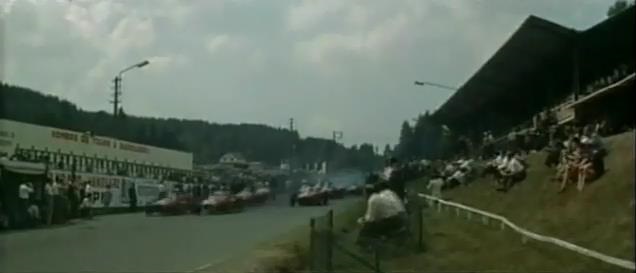
Monte Carlo, the Mille
Miglia...
“Well, winning one Mille Miglia
doesn’t prove he’s a genius, in a Grand Prix car he may be
nothing.”
Or, why did the French poodle cross the deadly racecourse? To get
at the cat on the other side, a ballerina admired by her impresario at Les Grands Ballets de Monte-Carlo, presenting
Les Sylphides
Casse-Noisette
One of the great CinemaScope works (Joe MacDonald).
Bosley Crowther of the New York Times, “it is something
for racing fans to see. But the business that passes
for a story in between and among the racing scenes is depressingly unoriginal
and banal.” Leonard Maltin,
“hackneyed”. TV Guide, “its very exciting racing footage almost
compensates for the slim plot.” Hal Erickson (Rovi),
“the CinemaScope process gets a rugged workout”.
At Nürburgring, the image is twice the
width of the screen, Hathaway pans to accommodate it. Francorchamps
(Grand Prix de Belgique)...
The considerable process work and a second theme are from The Big Wheel (dir. Edward Ludwig).
“One centimeter more rubber and I’da had
you, one centimeter more!” The “rest home champion” is
portrayed by Paul Newman in Mel Brooks’ Silent Movie. “Now I’ll show you the Grand Prix of
Italy.”
Halliwell’s
Film Guide, “totally unmemorable”.
“Signorina Navel Orange of 1952.” Grand Prix di Monza (Corsa 12 Ore)...
Frankenheimer and Katzin fared no better, critically
speaking. Headlines... another theme (cf.
Goldstone’s Winning)... the
collector...
Return to Nürburgring for the great
compound image that might have inspired Grand
Prix, newcomer on the make, champion holding his own, retirement in a muddy
ditch, an embittered opponent.
Paris, le Ballet de
l'Opéra. “Oh,
that—that critic who said you’d never be great? He’s crazy.” Reims,
Genevieve (dir. Henry Cornelius).
Saul Bass gives cast and crew the checkered flag. Huston finds the structure
useful in Moulin Rouge, a triumph
twice over.
The Bottom of the
Bottle
Cain and Abel, “but which one’s which?”
Thus far the film explains itself translucently, yet the reviews
go from Variety’s dull
appreciation to Crowther’s dismissal and Halliwell’s disgust.
Hathaway’s beautiful, precise abstractions frame and elide
the CinemaScope image at times in the most remarkable of styles.
23 Paces to Baker
Street
“Good night, Mr. Doyle.”
Big Ben’s up for repairs, like an American play tinkered
with in London by the playwright, blind.
His elevated flat in Portman Square looks out on the Thames
surrealistically, as Halliwell noted.
Lady Syrett has lost a nursemaid for her grandchildren,
it’s a question of Plaisir d’Amour perfume, very expensive.
At a pub called the Eagle, the playwright overhears a
conversation and subsequently dictates it from memory into one of his two tape
recorders.
A former secretary, the Unity Domestic Bureau, the Queen Mary
bearing an Argentinean couple with “an invalid, a child who never grew
up,” and the nursemaid’s Irish father leading the blind man up a
bomb-wrecked building about to be demolished, are among the pivotal images.
Rear Window and Wait Until Dark also have been
noted.
The title is directions in the fog, “behind you.”
Woman Obsessed
“No man cometh unto the Father, but by me,” an angry
Jehovah drives the new wife into concern for her son, intimidation breeds fear,
the one thing most abhorred.
This is enacted on a small farm in Quonset, Saskatchewan, with
much incident. “An utterly foolish film,” Crowther pronounced it.
The husband dies in a forest fire, the widow takes a hired hand to
run the farm, eventually they marry (Susan Hayward,
Stephen Boyd).
Conditions are primitive for the allegory,
one signal flare summons help, two a Mountie.
Seven Thieves
Hathaway’s great masterpiece on the roads that lead to
Rome, by Sydney Boehm out of Max Catto.
It was dismissed by the New
York Times (Bosley Crowther) as clever but
insignificant, the Catholic News Service Media Review Office says
“muddled”, Halliwell’s
Film Guide doesn’t get it either.
Excellent score by Dominic Frontiere, right in the mold of
Steiner and Deutsch, etc.
The elements of crime depicted in the gang are akin to
Welles’ analysis (Mr. Arkadin),
there’s even a nice anticipation of Dearden (Woman of Straw).
The magnificent scaling of the Monte Carlo heights by moonlight
is the signature of Hathaway’s prowess, the
theme subsequently pivots on Penn’s Bonnie
and Clyde to Peckinpah’s The
Getaway.
North to Alaska
The dramatic construction is hidden behind Nome, a seacoast town
in 1900 where two partners have a gold mine in the Yukon rush, and Seattle of
the fleshpots where one of the two goes to fetch digging equipment and a bride.
The reconciliation is grand and brisk, the partners are dogged
by a devil who cross-files on their claim, it all ends uproariously.
Variety and the New York Times saw nothing but uproar
and chided some of the best performances.
Circus World
Europe and America are matters of indifference to the circus
world, theoretically, but certain superstitions are unwisely flouted, which
indicates a rube mentality, and that’s no way to run a circus.
The fall of a performer sends the crowd rushing to see, the
steamship Circus Maximus goes over on its side, one works in a Wild West
show for some time, building up for a European tour, lions replaced by tigers
to be tamed.
The late aerialist had a wife and left behind a brother, there
is a daughter.
“Ben Hecht is the best screenwriter I have ever
seen” (Godard), that seems to be the decisive name on a formidable list
of writers, but compare the constellations of Hawks’ Hatari! and
Bergman’s The Serpent’s Egg.
“To have a circus, you have to have artists flying through
the air like musical notes, somebody making a tune with them, somebody with a
calliope inside.”
The Sons of Katie Elder
A down and dirty Western in Hathaway’s best style on the
theme of Hitchcock’s Lifeboat.
“We wanted to show that… while the democracies were
completely disorganized, all of the Germans were clearly headed in the same
direction.”
Nevada Smith
The epic tale of a revenge across the West and South, specially
constructed for a concentrated exposition of Hathaway’s themes (Wing
and a Prayer, The Dark Corner, Garden of Evil), a
perfectly-composed masterpiece from start to finish, and a bildungsroman
of a young ignorant half-breed making his way amongst the vicious types who
killed his father, a squaw man with a hand-to-mouth gold mine, and his mother.
True Grit
It gets pretty fancy in courtrooms and offices, and there are
several removes of justice, personal, executive, what have you, but the plain and
simple of it is stopping a rattlesnake about to bite a girl in the pit. Such
are the Dantean degrees, the theme will bear consideration with The Man Who
Shot Liberty Valance, not as an abstract exposé or an indictment if that
were warranted, but because rats is rats.
The construction is a stalwart girl with a good lawyer and a
murdered father, then a Texas Ranger sergeant after the murderer for killing a
State Senator (and his dog, the story goes), finally a Deputy U.S. Marshal on
the qui vive for an outlaw with whom the murderer has sought refuge.
So much of the analysis is presented as dialogue, and so much
time is spent on horseback traversing the country, that Canby famously dictated
his opinion as follows, it’s a Western starring the Duke.
The poles of his art are Kiss of Death and Nevada
Smith, but Hathaway’s implications are far-reaching and not so
obvious. So, for example, what was considered at the time a sentimental boost
for a much-loved star is actually a rigorous and foreboding attempt to conjure
the West in terms of language, of speech. This is a tight game, which demands
great bravura from the actors and in that sense only can the casting be
understood.
For the rest, this is a thematic development related to How
The West Was Won.
Raid on Rommel
The central scene has Rommel (Wolfgang Preiss) and a British
Army doctor (Clinton Greyn) in a friendly dispute concerning stamp issues from
the Caroline Islands (a former German possession), two or three?
The three parts of the film are the uprising of the British
prisoners in a convoy en route to
Tobruk, their attack on a fuel dump in a cleft of the hills there, and the
destruction of the shore guns (their original mission).
These correspond to the three dispositions of the Italian girl
(Danielle de Metz) in the Afrika Korps convoy, mistress to one of Il
Duce’s generals. She is haughty and contemptuous, then scopolamined and
ardent, finally abandoned to sit on her suitcase by the side of the road with a
foggy plaintive “ciao”.
The curious opening has Capt. Foster (Richard Burton) meet the
convoy in a half-track with two stiffs, he’s laid on air support for the
uprising, the prisoners are supposed to be a crack commando unit. Instead,
they’re mostly medical corps with a Quaker corporal.
Shoot Out
The itinerary is from prison to vengeance, along the way the
mistress has however died and left a little girl “six going on
seven”, father unknown.
The former partner in a bank robbery, now a respected
businessman who got that way by putting a bullet in one’s back, hires
three young hoorawers to scout the land ‘twixt prison and him, and bring
him word.
The good widow en route is young and lonely, her fine
young son hard-working and helpful.
The little girl, unloved, unwanted, is vexful and reluctant.
The title signifies not so much the partner, who gets his
anyway, but the hoorawers for their game of William Tell with the girl and the
widow’s china, they get their turn.
This was thought by critics to be quite mundane, generally.
As almost noticed by some, a variant of True Grit, among
other things.